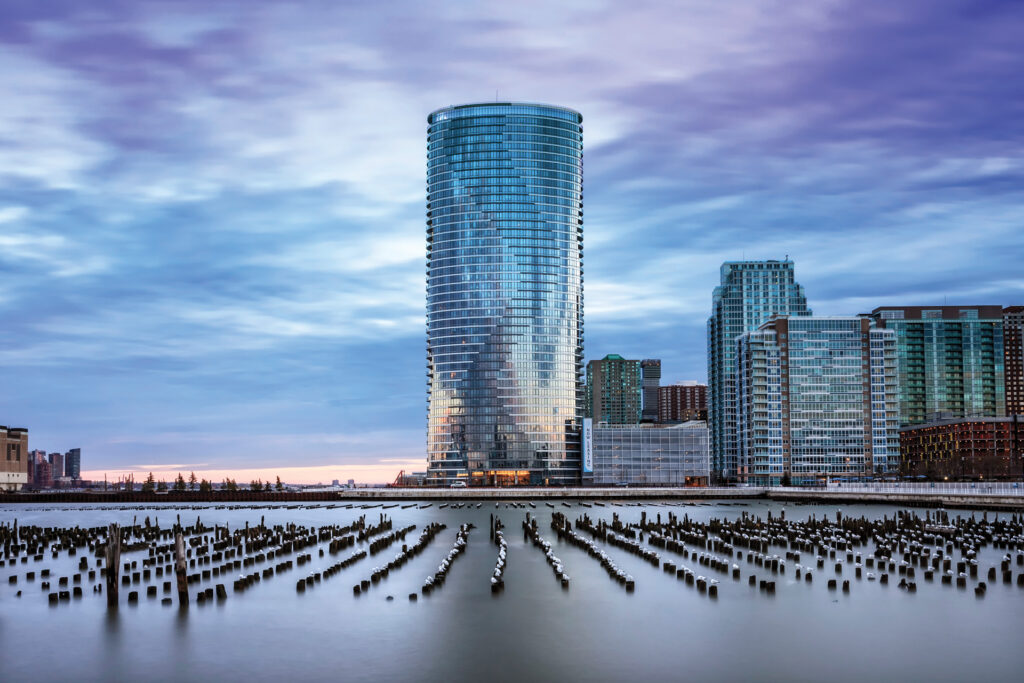
Written by Brooks McDaniel, SVP of Building Repositioning, STO Building Group

It has been a difficult few years for owners of office buildings, especially in cities like New York City. Challenging market conditions during the COVID era, competition from new Class A properties, and changing workplace requirements have all had an adverse impact on commercial real estate. As a result, many of NYC’s Class B office buildings are struggling. Faced with increased vacancies and dwindling rent roles, building owners are faced with a choice: do nothing and hope for the best, or implement a repositioning program to transform their underperforming building into one with a renewed market presence and increased value.
The goal of any repositioning program is to maximize return on investment by receiving top-of-the-market rents with little to no vacancies, while also reducing operating costs with efficient systems and updated facade. But the building owner also has the opportunity to reimagine the building to be a greater version of itself, or to change its use altogether.
Let’s review some options that an owner of a Class B office building might consider.
UPGRADE – CLASS A OFFICE
If a Class B office building is well-located, a value-add approach could be the right answer. By upgrading the building to Class A status, the owner can renew its presence in the market and attract new tenants at a higher rent rate. In 2021, Class A rents were 33% higher than those in Class B buildings. A series of upgrades are required to achieve these higher rents.
- Lobby, storefront, and elevator cabs. These renovations are an easy place to start. This scope of work is limited to a relatively small area and has an immediate impact to prospective tenants.
- Amenity package. What were once considered an optional luxury are now regarded as standard equipment. At minimum, a commercial office building should have a lounge and shared meeting space. If space permits, a fitness center with locker rooms and additional facilities, such as sports courts and spa treatment rooms, may be considered as well. Some buildings will be able to renovate their existing amenities, while others will have to create this space somewhere in the building.
- Building systems. Updating the building’s MEP systems can reduce operating costs, eliminate LL97 fines (in NYC), and improve the tenant experience. The most forward-thinking solution is to install state-of-the-art, all-electric air-source heat pumps with a DOAS system. This option represents a comprehensive refit of the building’s systems for the highest level of performance and sustainability. This has the dual benefit of reduced operating costs and increased marketing value as a “green building.”
- Building envelope. At a minimum, replacing old and inefficient windows will reduce heating and cooling loads and
increase occupant comfort. Enlarging the existing window openings will increase the amount of light and air on each floor.
Completely recladding a building can also give it a fresh, new look.
Upgrading to Class A from Class B is the most common repositioning strategy, and a remains a good option for many building owners. However, this repositioning strategy assumes that the building is in a location that is worthy of this type of investment. If the building is not in a desirable office submarket or is located on a less travelled side street (instead of an avenue), then the owner might consider other options.
CONVERT – LIFE SCIENCES FACILITY
The life sciences sector is booming, with strong demand for space and soaring rents. In 2021, NYC had 1.9Msf of lab space, and it is projected to grow to 4.3Msf over the next four years. Leasing activity for lab space has increased 85% year over year. So why not simply convert your under-performing office building to lab space?
Converting an existing building is cheaper and faster than building a new lab, but it is still much more expensive that simply upgrading an existing office building to a higher standard. And, not all buildings are suitable for conversion. The ideal candidate? A short, squat, former industrial building that is near an existing life sciences cluster. The required characteristics of a life sciences building are:
- Large floorplates: at least 25,000sf
- Heavy floor loading: 125psf of live load or higher to support heavy equipment and resist vibration
- High ceilings: Typically 13ft to 15ft clear
- At least two truck loading berths, with handling requirements that are specific to life sciences tenants
- Increased power and air handling requirements
If the building meets some of these requirements, then it merits further exploration. If not, then perhaps changing the building’s use to residential is a viable strategy.
CHANGE OF USE – RESIDENTIAL
Cities like New York always have a strong demand for new apartments, and the current rental market is especially robust. An existing commercial office building can be converted to residential use more easily than a conversion to life sciences, but there are several issues to be aware of.
- Zoning. In New York, zoning allows residential use in R zones and most C zones, but not in M zones. If the building is in a manufacturing zone, a residential conversion is not possible. But in zones where residential use is allowed, the city supports the residential conversion of defunct pre-1961 office buildings through the adoption of Article I, Chapter 5 of the zoning text. This defines less restrictive requirements for floor area ratio, yards, minimum distance between windows, etc. than newly constructed residential buildings. Newer buildings may be converted too, but they must comply with the full current zoning requirements.
- Building characteristics. The building’s shape and other characteristics affect the quality of the interior residential space. The biggest factor to consider is the floorplate depth. While a deep floorplate is often desirable in an office building, it is less desirable in a residential building, where it would cause dark apartments and inefficient layouts. An efficient floorplate depth for rental apartments is 60ft to 70ft. In a deep-floorplate office building, a structural bay can be removed from the back of the building to increase efficiency. Ideally, this removed area would be “relocated” to the top of the building as an overbuild.
Once the floorplate efficiency is achieved, the rest of the building can be gut renovated for residential layouts, with partitions, kitchens, baths, and new systems. A residential lobby, amenities, and vertical circulation revisions will be required too. A former office building can achieve new life as residential building, and welcome new residents in lieu of office workers.
Now, let’s think bigger, literally. An existing building can serve as a landing pad for air rights from neighboring lots.
CREATE AN ASSEMBLAGE
Bigger is better. If a neighboring building is not using all of its zoning area, the excess area can be bought and added to an existing building. But, there are several rules to bear in mind when creating an assemblage.
First, the granting site must be adjacent to the receiving site, with some portion of shared lot line. One cannot simply buy air rights on the far side of the block and transfer it willy nilly. So, a building owner will review all the neighboring lots and try to strike a deal with the neighboring building owners to buy their rights. If there is a willing seller, a deal is struck, and the city merges the zoning lots to allow the rights to be used on the receiving site. Once these lots are merged, new adjacencies are created, and there is a new neighbor who might have air rights to sell. This is how assemblages come to cover an entire block, which can take years to put together.
Building an assemblage works best in zones with no maximum height limit. If the height limit is met before all the air rights are used, then a cantilever allows area to be added to the side of the building. A cantilever easement is required to formalize the arrangement.
OPPORTUNITY KNOCKS
No matter which strategy a building owner chooses, a successfully repositioned building will have a new trajectory of higher income and lower operating costs. There is a huge amount of potential in any existing building. The right team can help you find it.
